The Future Technology Of STAR TREK
I re-post this from one of my old web pages I created in 1997 (with a slight up-date on the text). I hope you enjoy it and can appreciate my message.
TREKTECH!speaking of ... warp configurations, medicine, transporters, holography, etc. Something I think about...24th century physics and technologies are of course, conjecture and yes, I know, Science Fiction. BUT, they are not baseless! The seeds are right here in the 21st century! I would like to point out that much of our technologies of today are in existence largely due to "reverse engineering" of some people who watched the original STAR TREK in the late 60s and said to themselves, "hmmm, I wonder if...". I cite, to name a few, portable cellular phones, Biobeds, floppy disks, etc.,. Today, I want to talk briefly about two things- the core computer, which without, I couldn't talk about anything else; and I will also talk about propulsion, which without, there will be no TREK TO THE STARS in humanity's future. "Today's Science Fiction is often tomorrow's Science Fact. The physics that underlies STAR TREK is surely worth investigating. To confine ourselves to Terrestrial matters would be to limit the human spirit." -------------------------------------------------------Professor Stephen Hawking "IF YOU ENJOY WATCHING STAR TREK, YOU'RE IN GOOD COMPANY. Some of the most distinguished physicists in the world, from Kip Thorne to Steve Weinberg and Sheldon Glashow, tune in, and a popular pastime at professional physics meetings and over E-mail is a discussion of science in the series." -------------------------------------------------------Professor Lawrence M. Krauss |
It's "TECHNICAL" and it's FASCINATING!:(bear in mind; these are super short explanations and in my own words excepting the "technobabble") THE CORE COMPUTER : The heart of a starship operation!EVERYTHING! Environmental; Engineering; warp drive; impulse propulsion; tactical systems; sensor arrays;weapons arrays; helm; navigation; replicators; tractor beams; communications; structural integrity field- even holographic entertainment is controlled by the main computer system. Personnel interface is possible through a very "user friendly" technology known as Library Access Computer Retrieval System. This is activated simply by voice interface or by display pad sensors (touch). Response is relayed by graphical tactical and audio methods. Backup systems are in place and constantly "writing over" for smooth and to the second takeovers if there should be an unforeseen primary failure. Information and communication is processed through the Optical Data Network conduits at approximately five times the speed of light. This is achieved by the incorporation of mini subspace field generators located in the main core, which create a non propulsive field of subspace. The entire core and it's backups are controlled by banks of isolinear chips composed of faster than light nanoprocessors that are clustered into segments within their housing. Memory is accessed at the rate of 5000 kiloquads per second (even faster in the Intrepid Class Starships equipped with Bio-Neural circuitry). Subprocessors are integral and necessary for the total operation. Many of these subprocessors are distributed throughout the ship in key locations. Partial system failures do not have shipwide effects with this integration in place. WARP PROPULSION : From the beginning!Zefram Cochrane was the inventor of FTL travel for the planet Earth. This was, without question, the greatest advancement invention in the history of the planet! Cochrane first considered superluminal flight as a theory out of left field which he dubbed "Continuum Distortion Propulsion"- which was pretty darn close to what he ended up with; warping space and time. Through an intensive review of all known physical sciences by him and his team of physicists, he was able to apply and integrate his creation of warp physics and forever make obsolete all previous methods of propulsion. In the year 2061 he perfected his first prototype, which he called a "fluctuation superimpellor". This was an unmanned flight which allowed for the vehicle to "straddle" the speed of light, alternating first at one velocity and then another (sublight), while remaining at neither for longer than Planck time(1.3 x 10(-43) second-which is the smallest possible unit of measureable time). This is the non-Newtonian method (albeit in a rough state) which allows for the formation of the extradimensional warp field. This allows for varying degrees of propulsion, considerably refined, I might add, in the engines of the 24th century starships. The effect harnesses previously untouchable energies thought by Newtonian and Einsteinian theories and laws as limited and controlling. Therefore propulsion did not rely upon exhausting reactions which allowed us, FINALLY, to reach the stars! The concept (and later practice) allowed for hull nacelles mounted by support pylons, to access the other two major assemblies, the matter/antimatter reaction assembly, and the power transfer conduits creating layer upon layer of warp fields, expanding outwards from the nacelles (where a coupling and decoupling force is created), directly in proportion to the amount introduced by the plasma injection system to regulate speed and distance traveled. Space is condensed in front of the ship and expanded behind it by this process of warp field creation. This is all done within parameters of traditional physics, at relative speeds of .5c to .9c. A minor mass reduction in the ship occurs, which allows it to slip into the created fields and travel by push and pull of these fields. Deflector and shield array protects the ship from annihilation which would result from any collision (even a piece of spacedust would be enough at these speeds). Inertial Dampers keeps the forces from turning the crew into an instantaneous gelatinous state (SEE BELOW). Many other systems come into play, such as the Matter Reactant Injectors, the Magnetic Constriction Segments, Plasma Injectors, Dilithium, etc., not to mention the role of planted Federation time beacons to handle dilation effects to keep starships at a distance in temporal sync with the Federation and StarFleet Command. Inertial Dampers keep the forces from turning the crew into an instantaneous gelatinous state.As one could expect at such speeds, a protection for any matter (organic or not) inside a ship must be in place, reliable and effective. The Inertial Damping system can "foot the bill" for purposes herein. Part of the Structural Integrity Field and operating directly parallel to and in conjunction with it, this system works by building up a field within itself, which in turn generates a controlled series of variable-symmetry forcefields. The effect is an absorbtion of otherwise deadly inertial forces in high speed space flight. The crew exposure to acceleration is buffered by a layer of synthetic gravity plates, which "come online" through a sensor array when possible effects are anticipated. The field is then distorted along a vector which is diametrically opposed to the velocity change. There are of course, different manual settings available, which closely mirrors thermostatic conrols of today. These settings range from reduced power to hot standby modes. The gullibility of this explanation I give would be shadowed by a more technical, detailed description, however, I can stay safe this way, while still maintaining an air of consistency of the technical jargon. |
I would like to offer an analysis from one of our (present day) physicists. Please bear in mind that these are the words of a 21st century physicist. While he is positive about the possibilities of the technology of STAR TREK, he lives in an absolute world of what is and what is possible for what we know today. It is the deficit of a trained mind, in my opinion. My disclaimer in stating this, is that I have absolute respect for men and women of his stature in our present day, but I also know that "educated speculation" is still nothing more than speculation and I consider that we are all on equal footing in that regard. In other words, for him to tell us what's possible for the future by extrapolation of today's technology is fine, but his ability to speculate is diminished by his mindset. For example, advances in technology right now are making the "Heisenberg Uncertainty Principle", which has stood solid since Werner's paper, is now in question. We may very well be able to simultaneously predict velocity and location of an electron in the very near future (see HOLODECK). I am hopeful! So, here are his words:
By David Allen BatchelorIntroduction "Is Star Trek really a science show, or just a lot of "gee, whiz" nonsensical Sci-Fi? Could people really DO the fantastic things they do on the original Star Trek and Next Generation programs, or is it all just hi-tech fantasy for people who can't face reality? Will the real world come to resemble the world of unlimited power for people to travel about the Galaxy in luxurious, gigantic ships, and meet exotic alien beings as equals? Well, as for the science in Star Trek, Gene Roddenberry and the writers of the show have started with science we know and s-t-r-e-t-c-h-e-d it to fit a framework of amazing inventions that support action-filled and entertaining stories. Roddenberry knew some actual basic astronomy. He knew that space ships unable to go faster than light would take decades to reach the stars, and that would be too boring for a one-hour show per week. So he put warp drives into the show -- propulsion by distorting the space-time continuum that Einstein conceived. With warp drive the ships could reach far stars in hours or days, and the stories would fit human epic adventures, not stretch out for lifetimes. Roddenberry tried to keep the stars realistically far, yet imagine human beings with the power to reach them. Roddenberry and other writers added magic like the transporter and medical miracles and the holodeck, but they put these in as equipment, as powerful tools built by human engineers in a future of human progress. They uplifted our vision of what might be possible, and that's one reason the shows have been so popular. The writers of the show are not scientists, so they do sometimes get science details wrong. For instance, there was a show in which Dr. Crusher and Mr. LaForge were forced to let all of the air escape from the part of the ship they were in, so that a fire would be extinguished. The doctor recommended holding one's breath to maintain consciousness as long as possible in the vacuum, until the air was restored. But as underwater scuba divers know, the lungs would rupture and very likely kill anyone who held his breath during such a large decompression. The lungs can't take that much pressure, so people can only survive in a vacuum if they DON'T try to hold their breath. I could name other similar mistakes. I'm a physicist, and many of my colleagues watch Star Trek. A few of them imagine some hypothetical, perfectly accurate science fiction TV series, and discredit Star Trek because of some list of science errors or impossible events in particular episodes. This is unfair. They will watch Shakespeare without a complaint, and his plays wouldn't pass the same rigorous test. Accurate science is seldom exciting and spectacular enough to base a weekly adventure TV show upon. Generally Star Trek is pretty intelligently written and more faithful to science than any other science fiction series ever shown on television. Star Trek also attracts and excites generations of viewers about advanced science and engineering, and it's almost the only show that depicts scientists and engineers positively, as role models. So let's forgive the show for an occasional misconception in the service of an epic adventure. So, what are the features of Star Trek that a person interested in science can enjoy without guilt, and what features rightly tick off those persnickety critics? Well, many of the star systems mentioned on the show, such as Wolf 359, really do exist. Usually, though, the writers just make them up! There have also been some beautiful special effects pictures of binary stars and solar flares which were astronomically accurate and instructive. The best accuracy and worst stumbles can be found among the features of the show that have become constant through all of the episodes. Here's a list of the standard Star Trek features, roughly in order of increasing scientific incredibility: The Ship's Computer:Most of the things it does are within the plausible realm of artificial intelligence that computer scientists anticipate. We have auto-pilot functions and navigational systems today, and these are the most used functions of the Enterprise computer. Our computers even approach the ability to interpret spoken orders that the Enterprise computer has. In 400 more years -- the time when Star Trek: The Next Generation is set -- it is reasonable to expect many of the abilities of this computer to really be achieved. Matter-Antimatter Power Generation:This is one of the best scientific features of Star Trek. The mixing of matter and antimatter is almost certainly the most efficient kind of power source that a starship could use, and the way it's described is reasonably correct -- the antimatter (frozen anti-hydrogen) is handled with magnetic fields, and never allowed to touch normal matter, or KA-BOOM! This much is real physics. Let's not bother about the dilithium crystals part... sorry, but that's just imaginary. Impulse Engines:These are rocket engines based on the fusion reaction. We don't have the technology for them yet, but they are within the bounds of real, possible future engineering. Androids:Well, an important research organization for robotics is the American Association for Artificial Intelligence. At a recent conference on cybernetics, the president of the Association was asked what is the ultimate goal of his field of technology. He replied, "Lieutenant Commander Data ." Creating Star Trek's Mr. Data would be a historic feat of cybernetics, and right now it's very controversial in computer science whether it can be done. Maybe a self-aware computer can be put into a human-sized body and convinced to live sociably with us and our limitations. That's a long way ahead of our computer technology, but maybe not impossible. By the way, Mr. Data's "positronic" brain circuits are named for the circuits that Dr. Isaac Asimov imagined for his fictional robots. Our doctors can use positrons to make images of our brains or other organs, but there's no reason to expect that positrons could make especially good artificial brains. Positrons are antimatter! Dr. Asimov just made up a sophisticated-sounding prop, which he never expected people to take literally. Alien Beings:Most scientists now agree that life probably exists in other solar systems, now that we understand biochemistry a little. The chemical elements for carbon-based life like the lifeforms on Earth are common in the Universe, so maybe lifeforms like ourselves are numerous in the Galaxy. We can imagine all kinds of intelligent creatures, with any number of arms, legs, eyes, or antennae -- maybe a lot smarter than we are. It seems doubtful that humanoid shapes would be as common as the alien races on the Star Trek shows, though. Well, we have to allow the show some concessions to the shapes of available actors. Could half-human/half-alien hybrids ever exist, like Mr. Spock ? It seems almost impossible, but with recombinant DNA, our scientists have already created interspecies hybrids. Mr. Spock is not totally beyond biochemical reality, but definitely at the edge. Sensors & Tricorders:We have vibration sensors, sonar, radar, laser ranging, various kinds of light wavelength detectors and energetic particle detectors, and gravimeters. We also do a little three-dimensional imaging of the interiors of solid objects, like the human body, with magnetic fields and radioactivity detectors. The sensors and tricorders on Star Trek are quite different and more revealing as plot devices than anything we have. But with a stretch of the imagination, the tricorder scan could have today's magnetic resonance imager as its ancestor. The Enterprise's sensors must use the more advanced (and imaginary) "subspace fields," when it detects far-away objects in space, because the crew never has to wait for signals to travel to a target and return. Not all of the sensors on the show are possible. Deflector Shields, Tractor Beams & Artificial Gravity:We know how to deflect electrically charged objects using electromagnetic fields, and there are concepts for protecting space travelers from cosmic radiation this way. That's the only physics trick we know that resembles the powerful special effects of the Enterprise shields. We can also make big magnets that have some respectable attraction, and with the right electronic circuits regulating the strength of the magnets, we can imagine towing some kinds of metal objects through space. A beam that is projected at something to attract it is purely imaginary. We don't have any way to create artificial gravity either. Generating artificial graviton particles is imaginable, but there's no way to say how it might be done. Subspace Communications:Mathematicians discovered the concept of a subspace within a space continuum decades ago, and science fiction writers appropriated the term to serve their needs for a super-advanced way to reach other points in space, time or "other" universes. The concept is alive in physics today, in theories that our space-time may have eleven or more dimensions -- three space dimensions and time, plus seven more that are "curled up" within a tiny sub-atomic size scale, where they conveniently explain mysteries of the forces of physics. But Star Trek uses its own unrelated version of subspace, with signals that can travel as fast as the fastest starship. This is just a convenient notion to get messages to Star Fleet and back by the end of a TV show, with no realistic physics behind it. Phasers:According to the Star Trek: The Next Generation Technical Manual, phasers are named for PHASed Energy Rectification. They are really just spectacular energy blasters, with no detailed physics explanation. The original concept was that they were the next technological improvement upon LASERs. To the extent that they differ from LASERs, they are just fanciful props, descended from generations of blasters in science fiction of decades past. Healing Rays:Star Trek's Dr. Crusher shines a healing ray on her wounded patients and the skin or bone heals immediately. That's just a magical medical miracle of the imaginary 24th century. Surgeons today do work with lasers to cauterize or seal some tissues, and repair detached retinas. Some dentists use them, too. Also, there is actually a form of adhesive that can stick human cells together like Elmer's Glue (tm), and synthetic skin for temporarily protecting wounds! But the body's own healing is usually as fast as any other method. On the other hand, there is some evidence that weak electric currents can accelerate healing of bones, so something similar to Dr. Crusher's procedure -- but not instantaneous -- may become possible some day. Replicator:Today, we know how to create microchip circuits and experimental nanometer-scale objects by "drawing" them on a surface with a beam of atoms. We can also suspend single atoms or small numbers of atoms within a trap made of electromagnetic fields, and experiment on them. That's as close as the replicator is to reality. Making solid matter from a pattern as the replicator appears to do, is pretty far beyond present physics. Transporter:We don't have a clue about how to really build a device like the transporter. It uses a beam that is radiated from point A to point B where it STOPS at just the right precise place -- even passing through some barriers along the way -- and reconstructs the person it carries on the spot. Or it captures a person's pattern, dematerializing him or her, and brings the person to some other point. All of the rematerialized atoms and molecules are somehow in the precisely correct positions, with the right temperatures and adhering together just as if the transportee had not been dematerialized. Rematerializing, why doesn't everything fall to pieces if a gust of wind or just normal gravity disturb the reappearing atoms? Nothing in the physics of today gives a hint about how that might be possible. Arthur C. Clarke said, "Any sufficiently advanced technology is indistinguishable from magic." But we can't assume every magical feat could be accomplished, given sufficiently advanced technology. Holodeck:The same applies to this one. Holograms are apparent images with three dimensional structure. We can't imagine a way to assemble matter in the same way as the light in a hologram. Universal Language Translator:As this is used on the Star Trek shows, it's just an automagical device to enable characters to get through the stories. It would be too tedious and repetitious in a one-hour show for the characters to overcome real language barriers in a realistic manner in every show. The way the Enterprise crew can encounter an alien spacecraft, "hail them on standard frequencies," and establish instant telecommunications on their viewscreens is a preposterous shortcut to keep the plot from faltering. We can certainly dismiss the possibility of such an invention ever being built. Warp Interstellar Drive:This must be the crowning achievement of Federation technology! Despite its fundamental role in the show's plot, it violates known physics to an extent that can't be defended. The detailed explanation of the warp field effect in the ST: TNG Technical Manual only raises more questions than it resolves. It is said to involve huge discharges of energy and subspace fields that aren't understood in today's science. However, barring a very unlikely demolition of Einstein's theory by future, revolutionary discoveries in quantum physics, warp drive can't exist. Physicists of today understand the space-time continuum rather well, and there is very good reason to think that no object can move faster than the speed of light. This doesn't stop scientists like the great expert on relativity and quantum theory, Stephen Hawking, from enjoying the fun of the TV series, however. Wormhole Interstellar Travel & Time Travel:These are questionable consequences of some mathematical models for extremely bizarre, artificial arrangements of titanic super-massive objects -- untested imaginary models where Einstein's relativity theory is stretched to its ultimate limits. We don't have any evidence that Einstein's theory is valid in these theoretical cases, and the arrangements of these giant spinning masses don't occur in nature. Conclusion:So, the bottom line is: Star Trek science is an entertaining combination of real science, imaginary science gathered from lots of earlier stories, and stuff the writers make up week-by-week to give each new episode novelty. The real science is an effort to be faithful to humanity's greatest achievements, and the fanciful science is the playing field for a game that expands the mind as it entertains. The Star Trek series are the only science fiction series crafted with such respect for real science and intelligent writing. That's why it's the only science fiction series that many scientists watch regularly... like me." Copyright 1993 by David Allen Batchelor, Ph.D. Code 632, NASA Goddard Space Flight Center Greenbelt, MD 20771, USA (Posted WITHOUT Dr. Batchelor's permission on 1/6/98) |
WELCOME To The Future!

StarFleet Headquarters, San Francisco May 2366

United Federation Of Planets Headquarters, Paris September 2370
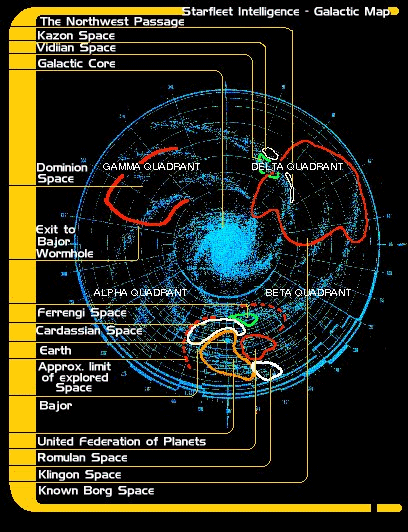
courtesy- Stellar Cartography
A little bit of interesting info. picked up on the net--->
10 Astonishing facts on the Star Trek phenomenon:
Star Trek is seen in over 100 countries and has been translated into dozens of languages.
Every month, a classic Star Trek or Star Trek: The Next Generation novel is published by Pocket Books.
13 Star Trek books are sold every minute in the United States of America.
Over 63 million Star Trek books are in print, and have been translated into more than 15 languages including Chinese, Norwegian, German, Hungarian and Hebrew.
Since July 1986, every new classic Star Trek novel published by Pocket Books has been a New York Times paperback best seller. To date, the novels have sold close to 30 million copies, making it the best selling series in publishing history.
The first six "Star Trek" films have earned over $700 million in box office grosses and video rentals.
Star Trek conventions are held every weekend of every year, in at least four different U.S. cities attracting over 300,000 fans and an estimated 1 million fans worldwide.
"Trekkers" are the only fans listed in the Oxford English Dictionary.
The U.S. Space Shuttle, the "Enterprise" was given its name after NASA received 400,000 requests from Star Trek fans.
A 1993 study from Purdue University found that children learn more about science fiction from Star Trek than anything else outside the home.
PARENTS?
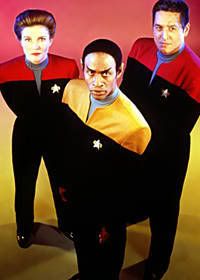
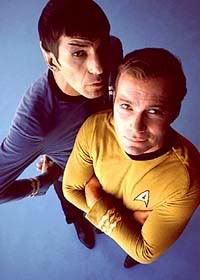

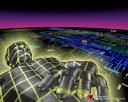



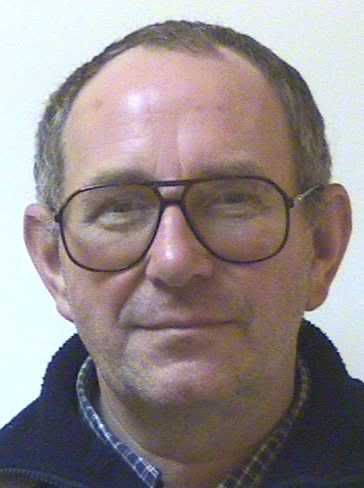
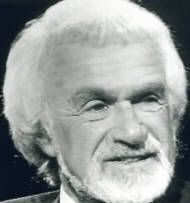

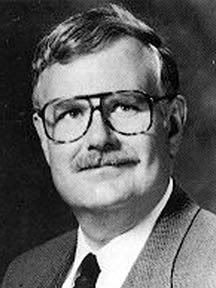
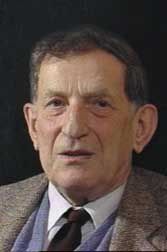
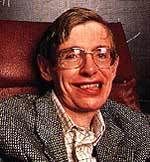
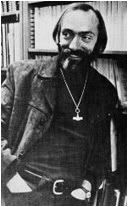
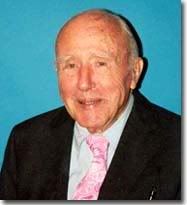
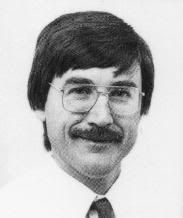



<< Home